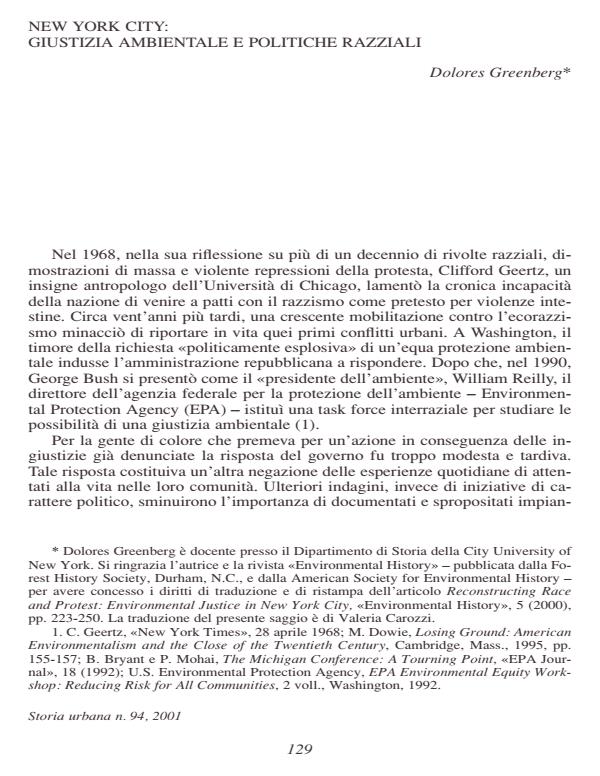New York City: giustizia ambientale e politiche razziali
Titolo Rivista STORIA URBANA
Autori/Curatori Dolores Greenberg
Anno di pubblicazione 2002 Fascicolo 2001/94
Lingua Italiano Numero pagine 34 P. Dimensione file 136 KB
DOI
Il DOI è il codice a barre della proprietà intellettuale: per saperne di più
clicca qui
Qui sotto puoi vedere in anteprima la prima pagina di questo articolo.
Se questo articolo ti interessa, lo puoi acquistare (e scaricare in formato pdf) seguendo le facili indicazioni per acquistare il download credit. Acquista Download Credits per scaricare questo Articolo in formato PDF

FrancoAngeli è membro della Publishers International Linking Association, Inc (PILA)associazione indipendente e non profit per facilitare (attraverso i servizi tecnologici implementati da CrossRef.org) l’accesso degli studiosi ai contenuti digitali nelle pubblicazioni professionali e scientifiche
This essay is about the overlay of race with environmental and social inequalities on urban frontiers. A long-term view of New York City history allows the author to consider the perspective of people of color and discovering that it was racism that blinded whites distorting or denying African Americans place in the life of the city. In many occasions African Americans in New York City served as scapegoats for policy failure: during the colonial times, the federalist era, the age of Jackson, the cholera years, the Draft Riots in the Civil War until the creation of a segregated «city within a city»: Harlem, a.k.a. «the metropolis of the Negro world» or the «capital of Black America». The trauma of the depression in 1929 had catastrophic consequences for Harlem, starting an epoch of deprivation and grimness of daily life that carried toward the race riots of 1935 and 1943. The end of the Second World War was not the end of the racial politics afflicting Harlem residents. Just an example: of 255 parks built in New York City under Robert Moses role as Commissioner of Park only one was in Harlem. In 1986, to combat these policies, Harlem residents founded West Harlem Environmental Action (WE ACT) and applied strategic savvy for direct action, permit intervention, lobbying, and suits against the government. This action became integrated into contemporary environmental consciousness and people of color played the major role as environmental agents of change. The essay is reprinted from «Environmental History», 5 (2000), pp. 223-250, published by the Forest History Society, Durham, N.C., and the American Society for Environmental History.
Dolores Greenberg, New York City: giustizia ambientale e politiche razziali in "STORIA URBANA " 94/2001, pp , DOI: